Welcome to this guide that'll help you fix common TV stand problems, from annoying wobbles to actual damage.
A sturdy TV stand is crucial for keeping your expensive television safe and protecting everyone in your home. It also ensures a better viewing experience and maintains your room's nice appearance when everything sits level and secure.
Fixing your stand yourself is safer and saves money compared to buying a new one. It's better for the environment, too, and keeps your room looking nice.
Whether you're a DIY enthusiast or have never picked up a tool, these easy-to-follow steps will walk you through everything you need to know.
Assessing the Problem
Before you start any repairs, you need to figure out exactly what's wrong with your TV stand. Understanding the specific issue helps you choose the right fix and gather the correct tools.
Common Problems to Check
Here are the most common TV stand issues you might find:
- Wobbling or instability: If your stand sways when you touch it, the problem could be an uneven floor surface, loose joints between parts, or damaged legs. This is the most common issue people face with TV stands.
- Visible damage: Look carefully for cracked or broken pieces, chipped or splintered wood, or bent metal frames. Any structural damage needs immediate attention. Otherwise, it'll get worse and could cause your TV to fall.
- Loose connections: Over time, screws and nuts naturally work themselves loose. This happens from regular use and small vibrations. Run your hand along all joints and connections to feel for any movement.
- Uneven weight distribution: If your stand holds other equipment like game consoles or speakers, check how the weight sits. Too much weight on one side causes the whole stand to lean or tip.
How to Test Your Stand
Test stability by gently pushing the stand from different angles. Watch for any wobbling or shifting. While you're at it, make sure your TV sits securely and all cables connect properly.
Don't just look at the obvious spots. Sometimes problems hide underneath or in the back corners where you don't usually see them.
When to Get Help
If you can't find the problem or it looks too complicated, consider calling a professional. Contact the manufacturer if your stand is still under warranty.
Once you understand what needs fixing, you're ready to gather your tools and materials for the repair.

Gathering the Necessary Tools and Materials
Before you start fixing your TV stand, gather all your tools and materials first. Having everything ready makes the job easier and prevents frustrating trips to the hardware store mid-repair.
Here's what you'll need for most TV stand repairs:
- Screwdrivers: You'll need both cross-shaped and flathead screwdrivers of various sizes. These are essential for removing and tightening screws throughout your TV stand during disassembly and reassembly.
- Adjustable wrench: This tool efficiently tightens or loosens nuts and bolts of different sizes.
- Hammer: A necessary tool for gently tapping parts into place or securing components that might be loose or not perfectly aligned.
- Level: This tool checks if your TV stand is completely level, preventing future wobbling.
- Wood glue or epoxy: Use these for mending cracks, filling in gaps, or reinforcing joints that seem weak.
- Sandpaper: Essential for smoothing down rough edges or preparing surfaces that need repair work or a new finish.
- Paint or stain: If your TV stand has visible damage affecting its appearance, or if you're refurbishing it during repair, these help match the existing finish or create an entirely new look.
- Safety gear: Wear gloves to prevent cuts and splinters, and safety glasses to protect your eyes from dust and debris when sanding or hammering.
Set up a clean workspace with good lighting. You need room to move around and see what you're doing. Lay down a newspaper or cardboard to protect your floor from scratches or spills.
Now that you have everything ready, you can start the actual repair work with confidence.

Steps to Fix a TV Stand
Now that you've identified the problems and gathered your tools, it's time to start the repair work. Follow these steps carefully to fix your TV stand properly.
- Clear everything off the stand: Start by removing your TV and all other equipment from the stand. This gives you full access to every part of the stand. You'll be able to see and reach areas that were hidden before.
- Check and tighten all hardware: Use your screwdriver or wrench to check every screw and nut on the stand. Tighten any loose screws securely. Replace missing or damaged screws with the same size and type.
- Fix cracks and weak joints: If you found cracks, chips, or weak joints during your inspection, apply wood glue or epoxy to the damaged areas. Align the pieces carefully and press them together firmly. Wipe away excess glue immediately with a damp cloth. Let the glue dry completely according to the package directions.
- Reinforce wobbly areas: Some joints might still feel weak even after tightening. Strengthen them by adding extra screws in nearby solid areas. You can also install metal brackets designed for furniture or use corner braces for extra support where pieces meet.
- Level the stand: Once structural repairs are done, use your level to check if the stand sits evenly. Place the level on top of the stand in different directions. If it's not level, adjust the feet or legs until the bubble centers perfectly.
- Sand and refinish damaged surfaces: For any rough edges or damaged areas, sand them smooth with medium-grit sandpaper. Wipe away all dust with a clean cloth. Apply matching paint or stain if desired. Let the finish dry completely before moving to the next step.
- Remount your TV: After everything has dried, carefully place your TV back on the stand. Follow your TV manufacturer's mounting instructions exactly. Connect all cables properly and check that the TV sits stably without wobbling.
These steps will fix the most common TV stand problems. However, some issues need special techniques or professional help. Check your manufacturer's guidelines for specific models.
By taking time to properly repair your TV stand, you restore its stability and ensure your TV's safety. You can now enjoy watching without worrying about wobbles or potential accidents.

Conclusion
Congratulations on fixing your TV stand! You've restored its stability and made your home safer. Your hard work paid off. You no longer have to worry about a wobbly TV or risk it falling. Your entertainment area looks neat again. And you saved yourself the cost of a new stand.
The skills you picked up today are yours to keep. You now know how to handle loose screws, wobbly legs, and other common TV stand issues.
Of course, some problems need expert help. If you face complex repairs or electrical issues, reach out to the manufacturer or a professional.
Time to enjoy your favorite shows. Your TV is secure, your stand is solid, and you can relax knowing you fixed it yourself.
FAQs
How can I fix a wobbly TV stand?
First, check if your stand is on level ground. Place a level on top to see if the floor is uneven. If it is, use furniture pads under shorter legs to balance them out.
Next, tighten all screws and bolts with a screwdriver or wrench. Look for loose connections where pieces join together. If screws don't tighten anymore, the holes might be stripped. Fill them with wood glue and toothpicks, then rescrew them once dry.
What should I do if my TV stand has scratches?
Light scratches can be fixed with a furniture touch-up marker that matches your stand's color. Clean the area first, then apply the marker following the wood grain. Let it dry completely.
For deeper scratches, use wood filler. Apply a small amount with a putty knife and smooth it level. Once dry, sand gently with fine-grit sandpaper. Then apply matching stains or paint to blend the repair.
How do I repair a broken shelf on my TV stand?
If the shelf is cracked but still holding together, reinforce it with a metal bracket underneath. Screw the bracket into solid parts of the shelf for support.
For completely broken shelves, measure the dimensions and buy a replacement board. Many hardware stores will cut wood to size for you. Sand the edges smoothly and apply a matching finish before installing.
Read More:



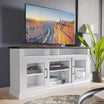


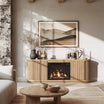



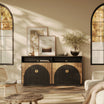
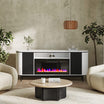
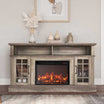
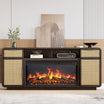
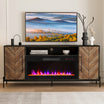
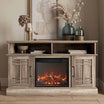
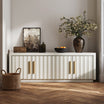
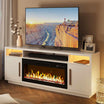
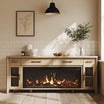
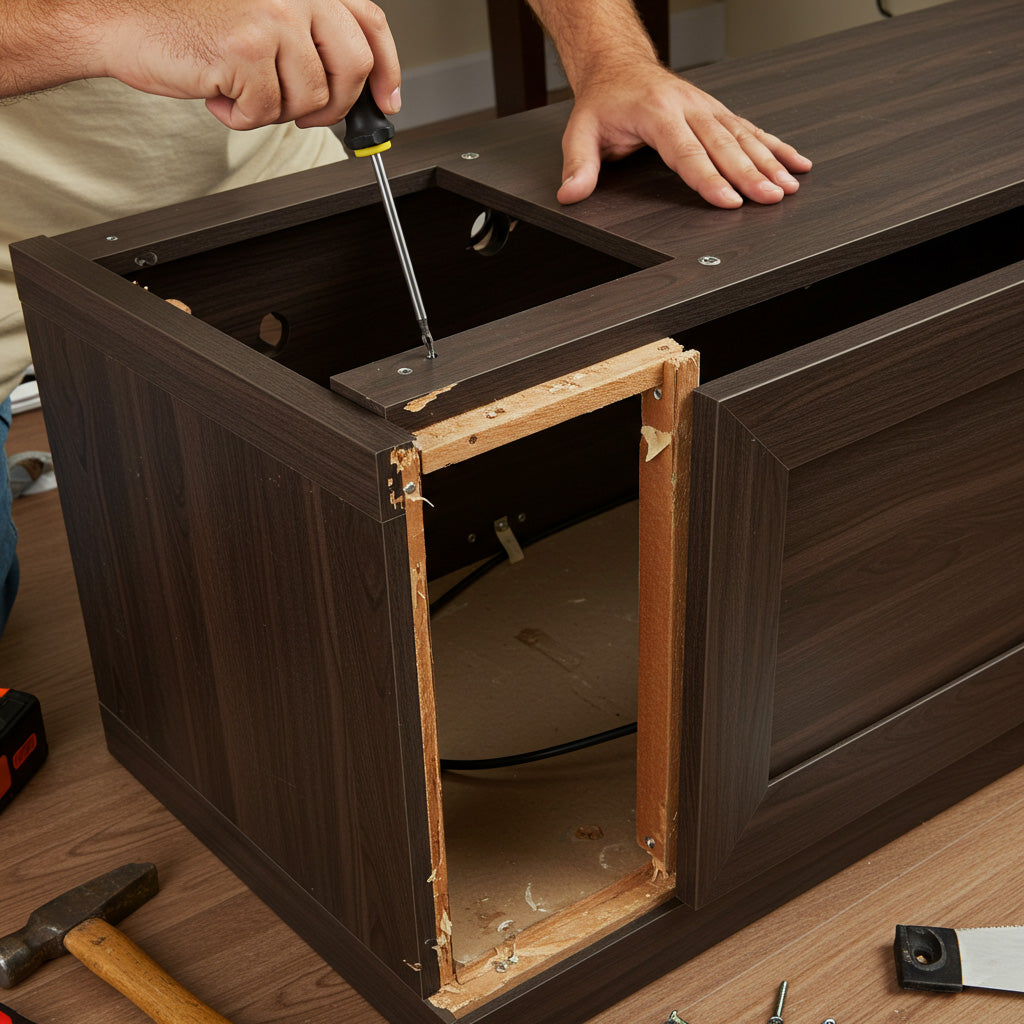
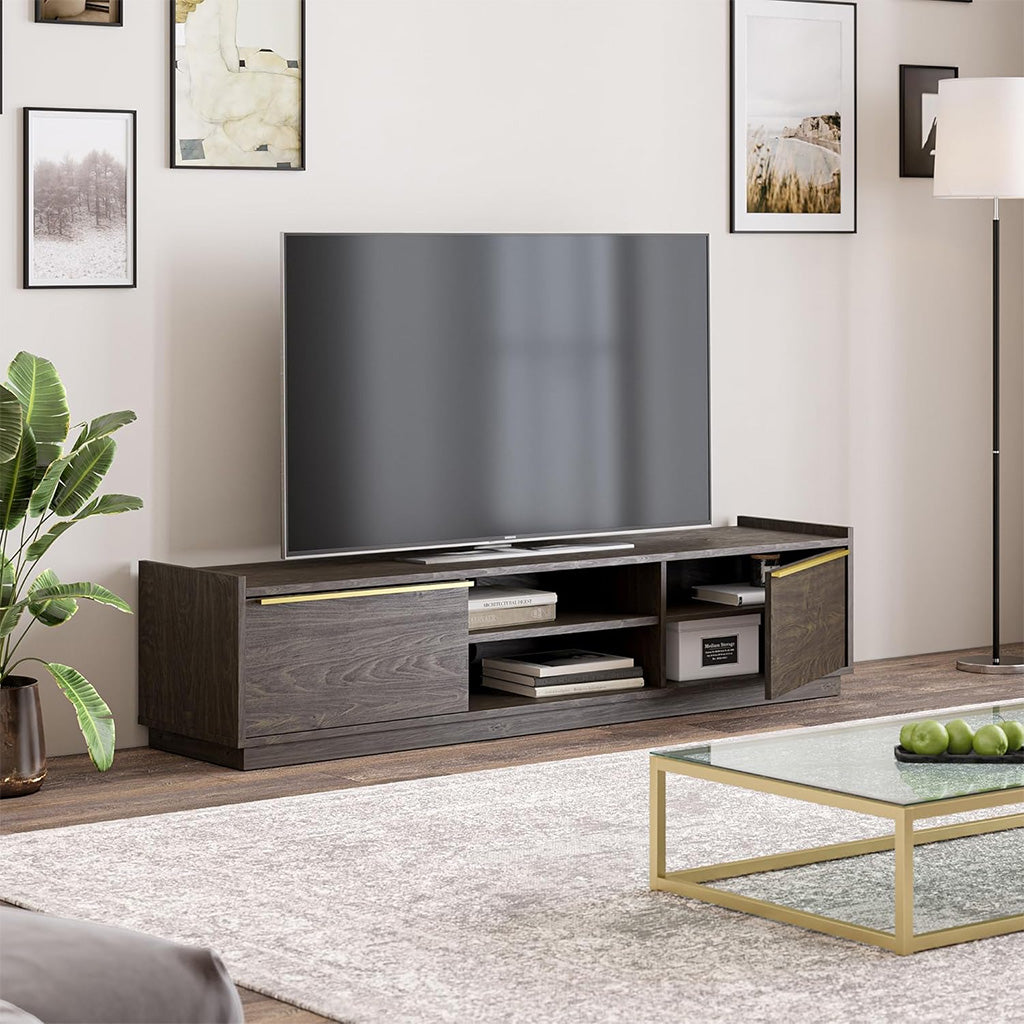
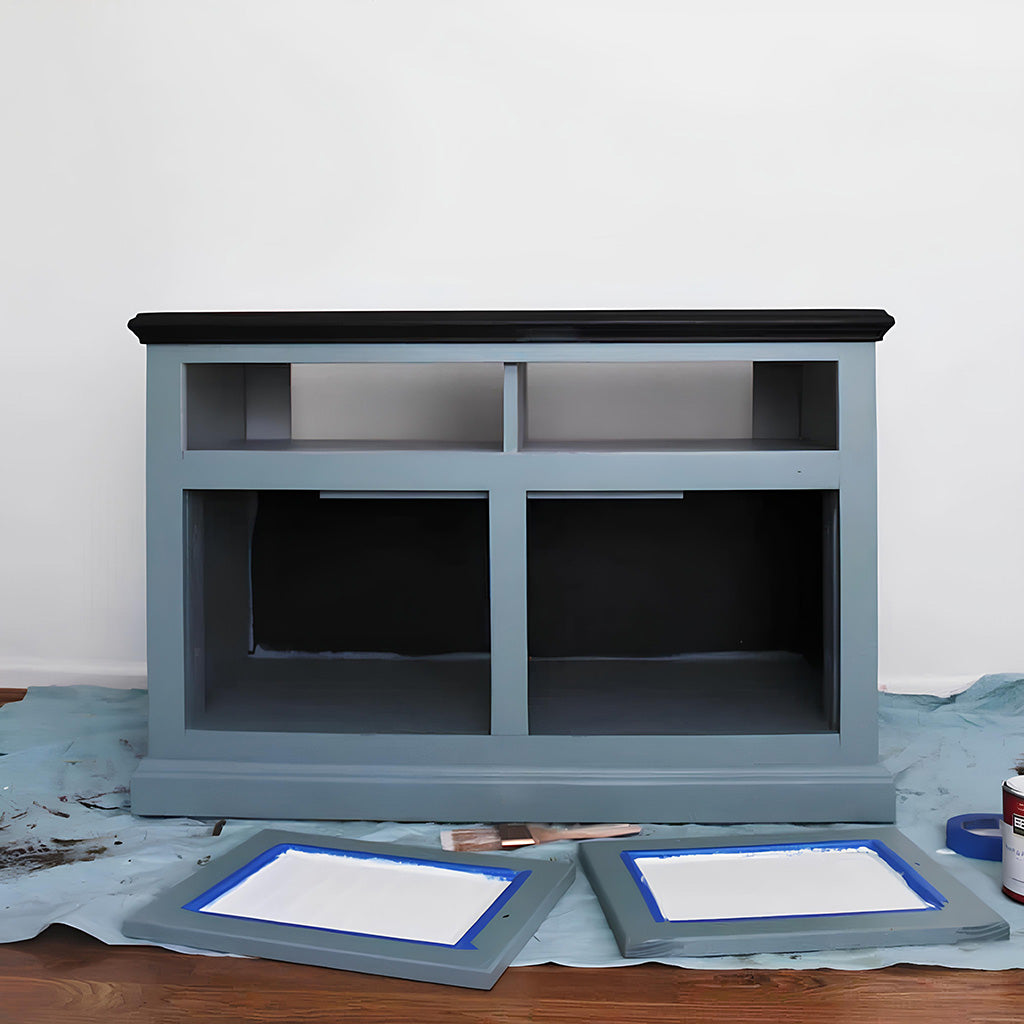
Leave a comment
This site is protected by hCaptcha and the hCaptcha Privacy Policy and Terms of Service apply.